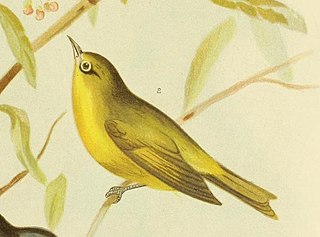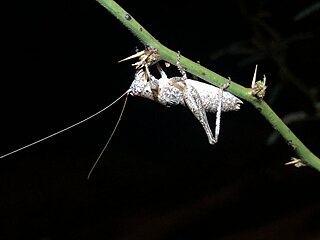
Suillus is a genus of basidiomycete fungi in the family Suillaceae and order Boletales. Species in the genus are associated with trees in the pine family (Pinaceae), and are mostly distributed in temperate locations in the Northern Hemisphere, although some species have been introduced to the Southern Hemisphere.

Suillus luteus is a bolete fungus, and the type species of the genus Suillus. A common fungus native all across Eurasia from Ireland to Korea, it has been introduced widely elsewhere, including North and South America, southern Africa, Australia and New Zealand. Commonly referred to as slippery jack or sticky bun in English-speaking countries, its names refer to the brown cap, which is characteristically slimy in wet conditions. The fungus, initially described as Boletus luteus by Carl Linnaeus in 1753, is now classified in a different fungus family as well as genus. Suillus luteus is edible, though not as highly regarded as other bolete mushrooms. It is commonly prepared and eaten in soups, stews or fried dishes. The slime coating, however, may cause indigestion if not removed before eating. It is often sold as a dried mushroom.

Big Chico Creek is a creek in northeastern California that originates near Colby Mountain in Lassen National Park. It flows 46 miles (74 km) to its confluence with the Sacramento River in Butte County. The creek's elevation declines from 5,000 feet (1,500 m) above sea level at its head to 120 feet (37 m) where it joins the Sacramento River, as shown on the Ord Ferry USGS quadrangle. Big Chico Creek forms part of the demarcation between the Sierra Nevada and the Cascade Range.

Gymnopilus junonius is a type of mushroom-forming fungus in the family Hymenogastraceae. Commonly known as the spectacular rustgill, this large orange mushroom is typically found growing on tree stumps, logs, or tree bases. Some subspecies of this mushroom contain the neurotoxic oligoisoprenoid gymnopilin.

Zapus is a genus of North American jumping mouse. It is the only genus whose members have the dental formula 1.0.1.31.0.0.3. Zapus are the only extant mammals aside from the Aye-aye with a total of 18 teeth.

Elkhorn Slough is a 7-mile-long (11 km) tidal slough and estuary on Monterey Bay in Monterey County, California. It is California's second largest estuary and the United States' first estuarine sanctuary. The community of Moss Landing and the Moss Landing Power Plant are located at the mouth of the slough on the bay.

The canary white-eye or yellow white-eye is a species of white-eye endemic to northern Australia in subtropical or tropical mangrove forests. Its common name reflects the circle of white feathers around its eye.

Chlidanthus is a genus that consists of 10 species of tender bulbs from tropical South America, mostly natives to the Andes. The botanical name comes from the Greek, meaning "delicate flower". The plants have large spherical bulbs with gray-green, strap-shaped leaves 30 cm long arising from the base. In late spring to early summer, clusters of 3-4 large, strong citrus-scented fragrant, funnel-shaped flowers 10–13 cm long held terminally on stalks 25 cm high, colored in yellow, pink or red.

Hypochthonius is a genus of mites in the family Hypochthoniidae. There are about 10 described species in Hypochthonius.
Ateloplus coconino is a species of shield-backed katydid in the family Tettigoniidae. It is found in North America.

Ateloplus is a genus of shield-backed katydids in the family Tettigoniidae. There are about eight described species in Ateloplus.

Stenocranus is a genus of delphacid planthoppers in the family Delphacidae. There are more than 70 described species in Stenocranus.
Embidopsocus is a genus of booklice in the family Liposcelididae. There are more than 40 described species in Embidopsocus.

Muirodelphax is a genus of delphacid planthoppers in the family Delphacidae. There are about 13 described species in Muirodelphax.

Ateloplus schwarzi is a species of shield-backed katydid in the family Tettigoniidae. It is found in North America.

Cimolus is a genus of leaf-footed bugs in the family Coreidae. There are at least four described species in Cimolus.

Cychramus is a genus of sap-feeding beetles in the family Nitidulidae. There are about six described species in Cychramus.
Lutrochus luteus is a species of travertine beetle in the family Lutrochidae. It is found in North America.

Ateloplus splendidus is a species of shield-backed katydid in the family Tettigoniidae. It is found in North America.

Dysdercus mimulus is a species of red bug in the family Pyrrhocoridae. It is found in the Caribbean, Central America, and North America.

















